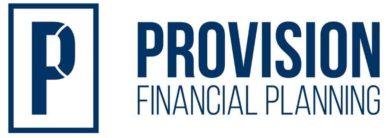Retirement Planning at Important Ages
For better or worse, there are a lot of retirement planning rules that involve how old you are. Knowing these rules can help you avoid higher taxes (and penalties), but they can also allow you to take advantage of certain benefits.
Age 50
Once you turn 50, you are allowed to make “catch-up” contributions to different types of accounts. In addition to the standard annual limits, you can contribute an additional $6,500 to employer retirement plans like 401ks and 403bs, and $1,000 to IRAs.
Age 55
Similarly, you can contribute up an additional $1,000 to a Health Savings Plan (HSA). A spouse can also make this contribution to their own plan if they meet the eligibility requirements.
You can now also do an in-service distribution. This means you can roll money out of an employer plan to an IRA without leaving the company. On the flipside, you can distribute funds from an employer plan with no penalty if you do separate from service. So, you may consider NOT doing an IRA rollover if you’re between 55 and 59.5 because pulling those same funds from an IRA would involve a penalty.
Age 59.5
You can now distribute money from IRAs and annuities without paying the 10% penalty. If you inherited an IRA from your spouse and treated it as an inherited IRA, then you can roll that into your own since you can avoid the penalty on any distributions now.
Age 60
This is the earliest you can claim social security benefits as a surviving spouse. You can’t be remarried though. A neat planning strategy for many is claiming this benefit, and then switching to your own higher benefit at a later age.
Ages 62-69
Age 62 is the earliest you can claim your Social Security benefit, although it will be reduced from your Full Retirement Age benefit. Generally, your benefit will increase about 8% each year that you delay taking your benefit. The right claiming strategy for you is too complex for this article, but the healthier you are and the longer you expect to live the better decision it is to delay.
Age 65
Your initial enrollment period for Medicare begins 3 months before the month you turn 65 and ends three months after that month. Missing an enrollment period can result in penalties if you don’t qualify for an exception. A common exception is still working and having “creditable coverage”. It’s up to you to make sure your current plan qualifies, especially if your employer has 20 or fewer employees.
Age 70
You cannot delay your Social Security benefit beyond age 70. A common strategy couples pursue is to let the spouse with the higher benefit delay until 70 and the other spouse to claim around Full Retirement Age. The reason for this is because the surviving spouse retains the higher benefit of the two.
Age 70.5
Once you turn 70.5, you get to take advantage of one of the best benefits in the tax code if you are charitably inclined. You can now do a Qualified Charitable Distribution, or QCD. This allows you to give money directly to a charity from an IRA and pay no tax, providing you with a charitable tax deduction without itemizing your deductions. Accounting for this on your tax return can be tricky, so make sure you confirm with your tax preparer that you weren’t taxed on that amount.
Age 72
With the passage of the SECURE Act in 2019, this is the new age where you must start taking Required Minimum Distributions from your retirement account. The actual date is April 1 of the year after you turn 72. If you are still working, you do not have to take RMDs from your current employer’s plan, so it can make sense to roll IRAs and old 401ks to your current plan. Alternatively, Roth IRAs don’t have RMDs, but Roth 401ks do. You can avoid these RMDs by rolling to a Roth IRA if you are no longer working.
Now you know when you’ll have to make these decisions so you can plan ahead. As Mitch Anthony says, “it’s easier to prepare than repair”.
A version of this article originally appeared here.
